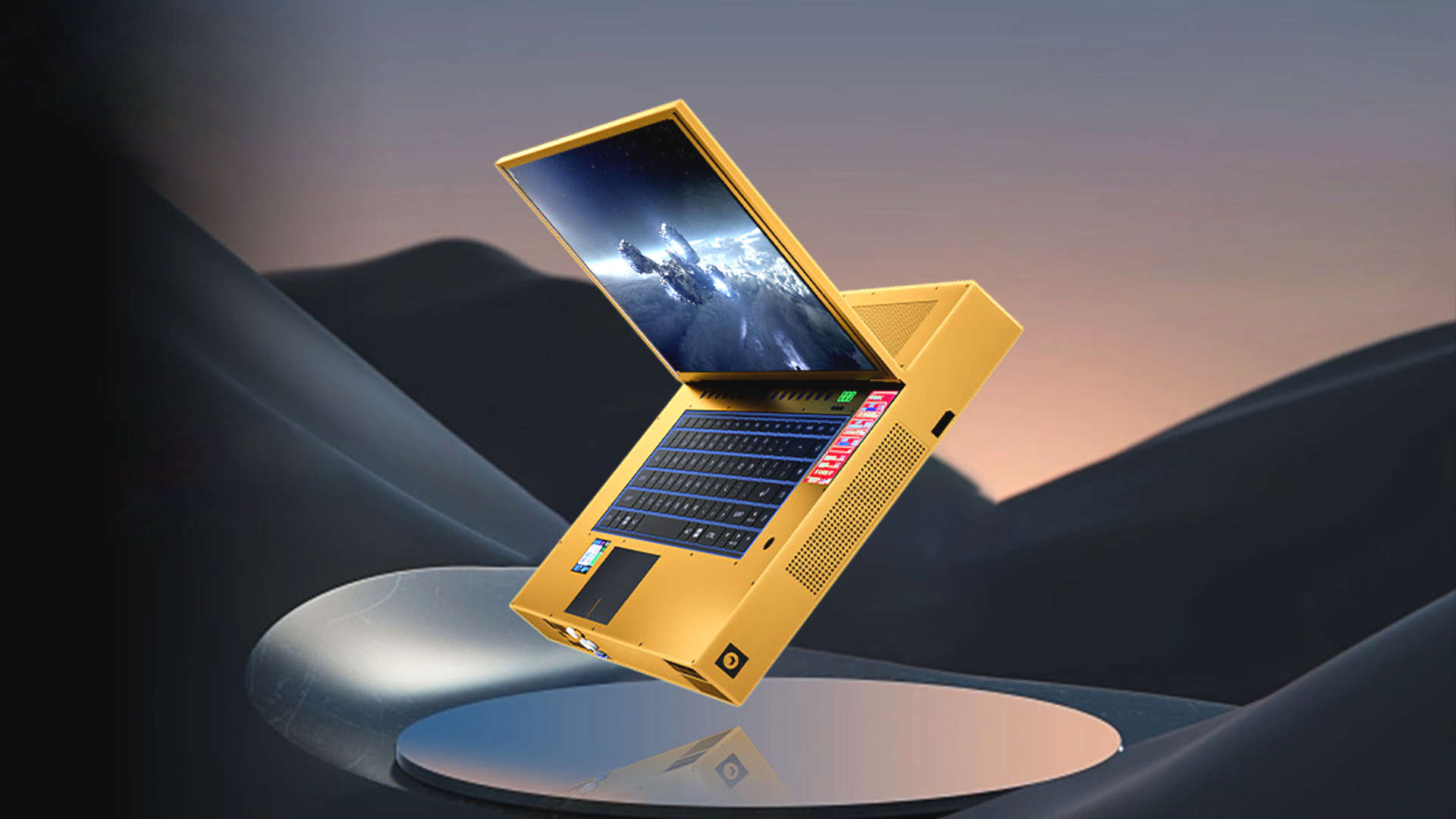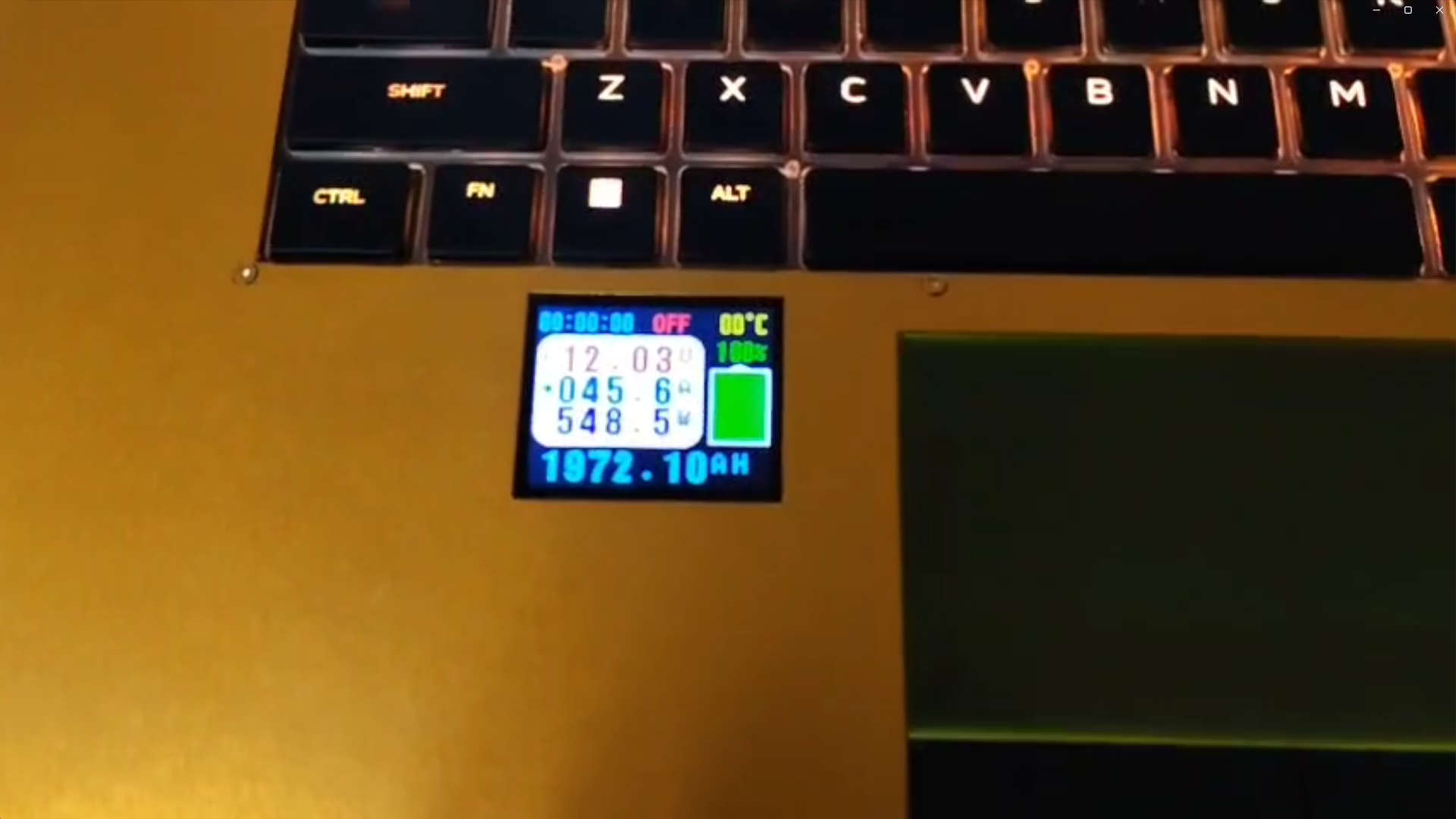This is the most absurd blend of retro-futuristic looks and server grade hardware that I've ever seen, and it's all in a laptop, and I want one badly
I might need a lap the size of an M-class star-freighter, though.

Zhanjiang Xinjuneng Technology, a firm specialising in high-performance mobile workstations, has decided that you can fit anything in a laptop if you put your mind to it. Cue the Yunguai REV-9, sporting a 64 core AMD EPYC server CPU, a GeForce RTX 4080, a 17.5 inch 2K screen, and a custom liquid cooling system. You'll probably never want it on your actual lap but who cares when it has such a cool Nostromo-from-Alien vibe to it.
We spotted this over at Notebookcheck and it's nothing short of huge, with dimensions of 420 x 325 x 46 mm. To give you an idea on just how hulking that it is, the 17 inch Asus ROG Scar is 395 x 282 x 23 mm. In other words, the REV-9 is 43 mm deeper and twice as thick. But why is it so large?
It's all down to the choice of components. It's being marketed as a mobile workstation but even so, the specifications are somewhat bonkers. Take the CPU, for starters: It's an AMD EPYC (7713 or 9554), which has 64 cores, 128 threads, and 256MB of L3 cache. Depending on which version you pick, you're looking at something that can consume as much as 400W of power (though the default is a mere 360W for the 9554).
Then, there's the GPU. It's a laptop, so it will be using a mobile-version GPU, yes? Nope. The designers stuffed the desktop version of the GeForce RTX 4080 inside: 9,728 shaders, a boost clock of 2.51GHz, 16GB of GDDR6, and a TDP of 320W. In a demonstration video, the REV-9 is shown running through Cinebench and Furmark tests, and via a couple of extra, built-in LCD panels, the goliath pulls in over 540W in the latter benchmark.
But how on earth does one deal with that kind of heat, especially in a laptop? The answer is a split liquid cooling system, presumably with separate loops for the CPU and GPU. This is why the REV-9 is twice as thick as the Asus ROG Scar, and it's also why all of the IO ports are housed in the front of the laptop's base. The rear is all taken up by the cooling apparatus.

The website for Zhanjiang Xinjuneng Technology is a little, ah, basic which suggests that this laptop is probably one of the first projects the company is aiming to introduce. The REV-9 is currently being crowdfunded and I genuinely hope it's successful. Partly because you pretty much can't get anything like this, right now.

Best gaming PC: The top pre-built machines.
Best gaming laptop: Great devices for mobile gaming.
For example, Dell's most powerful mobile workstation, the Precision 7780, sports a Core i9 13950HX and an Nvidia RTX 4000 Ada. That's a piffling 24 cores, 36 threads, and 7,424 shaders. Heck, the CPU's base TDP is just 54W. Who wants that?
The biggest gaming news, reviews and hardware deals
Keep up to date with the most important stories and the best deals, as picked by the PC Gamer team.
Seriously though, I want it to succeed just for its wonderfully industrial design. It wouldn't look out of place on the set for the original Alien film and I can just imagine it clicking and clacking away, as the mighty CPU inside carefully pilots the Nostromo and its valuable cargo across the silent void of space.
And even if you don't think it looks all that great, the hardware inside would have no problem running a CAD program to design the spacecraft. I wonder if it's too late to send out a letter? Dear Santa, this year I would like a Yunguai REV-9 because I've been so good.

Nick, gaming, and computers all first met in 1981, with the love affair starting on a Sinclair ZX81 in kit form and a book on ZX Basic. He ended up becoming a physics and IT teacher, but by the late 1990s decided it was time to cut his teeth writing for a long defunct UK tech site. He went on to do the same at Madonion, helping to write the help files for 3DMark and PCMark. After a short stint working at Beyond3D.com, Nick joined Futuremark (MadOnion rebranded) full-time, as editor-in-chief for its gaming and hardware section, YouGamers. After the site shutdown, he became an engineering and computing lecturer for many years, but missed the writing bug. Cue four years at TechSpot.com and over 100 long articles on anything and everything. He freely admits to being far too obsessed with GPUs and open world grindy RPGs, but who isn't these days?

